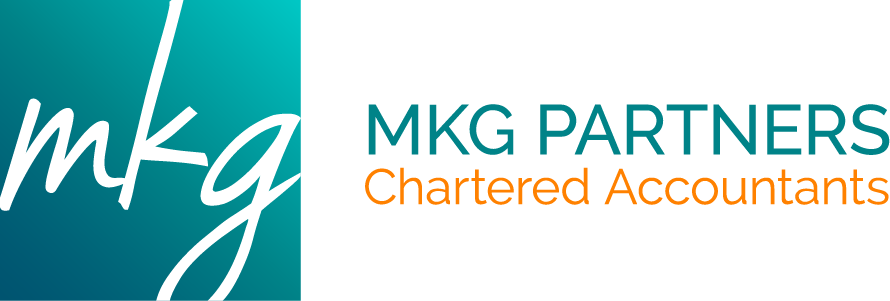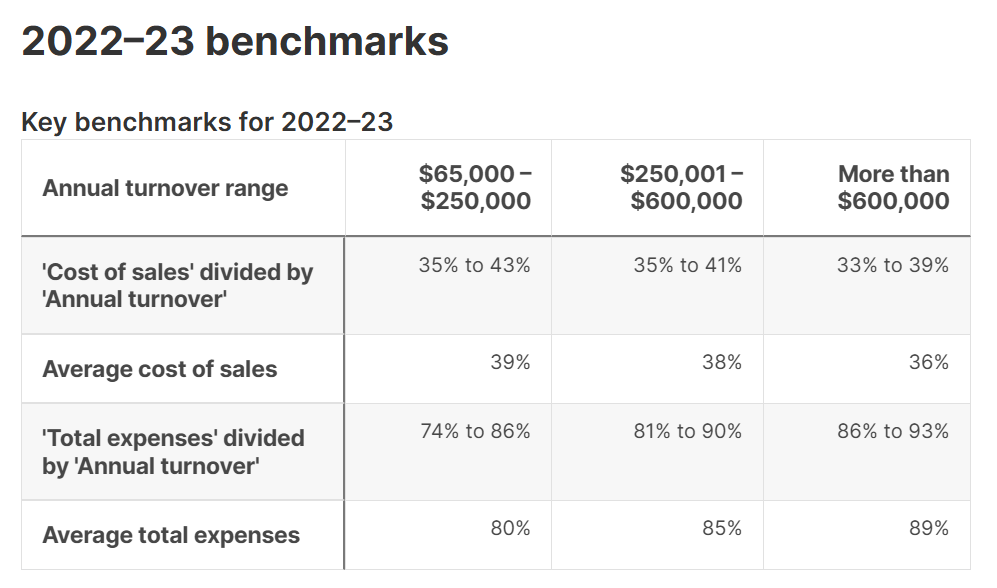Keep Your Business Off the ATO’s Radar with Smart Benchmarking
Staying aligned with industry benchmarks is a smart way to keep your business running smoothly and avoid unnecessary attention from the ATO. The ATO recently updated its small business benchmarks for over 100 industries, giving business owners a clear idea of what typical expenses and profit margins should look like. If your numbers are way off, it could raise questions — but understanding these benchmarks helps you identify gaps early, improve efficiency, and keep your financials in good shape. Here’s how to make the most of them.

What Are ATO Small Business Benchmarks?
ATO benchmarks are financial performance indicators based on data from similar businesses within the same industry. They cover key ratios such as:
✅ Cost of sales to turnover
✅ Labour costs to turnover
✅ Rent expenses to turnover
✅ Net profit margin
The ATO uses these benchmarks to identify businesses that may be under-reporting income or incorrectly claiming deductions. If your business falls outside the expected range, it might trigger a review or audit from the ATO.
How Benchmarks Help You Stay on Track
Using benchmarks helps you:
-
Spot issues early before they attract ATO attention
-
Understand how your business compares to others in your field
-
Make better financial decisions, backed by real data
So, how do you actually apply these benchmarks to your business?
Let’s walk through two real-world examples — one where a coffee shop falls within the expected range, and one where the numbers might raise a red flag.
Following is the ATO 2022 – 23 Benchmarks for cofee shop;
Example: A Coffee Shop That Falls Within ATO Benchmarks
Let’s look at a coffee shop with an annual turnover of $705,200. The owner wants to check how the business is tracking compared to others in the same industry using the ATO’s latest benchmarks.
For coffee shops with turnover between $600,000 and $3 million, the ATO provides benchmark ranges for key financial ratios:
-
Cost of Sales to Turnover: 33% – 39%
-
Total Expenses to Turnover: 86% – 93%
Here’s how this business stacks up:
-
Cost of sales: $253,300
Ratio = ($253,300 ÷ $705,200) × 100 = 35.9% -
Total expenses (excluding payments to associates): $625,500
Ratio = ($625,500 ÷ $705,200) × 100 = 88.7%
Both figures fall comfortably within the ATO’s expected ranges. This suggests the business is operating efficiently, recording its income and expenses properly, and is less likely to draw unwanted attention from the ATO.
Example: A Coffee Shop That Falls Outside ATO Benchmarks
Now let’s look at another coffee shop in Perth, also with an annual turnover of $705,200. At first glance, things may seem fine — but a closer look at the financials compared to ATO benchmarks tells a different story.
For coffee shops in the $600,000 to $3 million turnover range, the ATO expects:
-
Cost of Sales to Turnover: 33% – 39%
-
Total Expenses to Turnover: 86% – 93%
Here’s how this business compares:
-
Cost of sales: $140,000
Ratio = ($140,000 ÷ $705,200) × 100 = 19.9% -
Total expenses (excluding payments to associates): $480,000
Ratio = ($480,000 ÷ $705,200) × 100 = 68.1%
Both figures fall well below the ATO’s benchmark ranges. While low costs might sound like a good thing, they can actually be a red flag.
A cost of sales ratio under 20% may suggest that not all income is being reported, or that expenses are being misclassified. Likewise, significantly lower total expenses could mean certain business costs aren’t being recorded — or that something’s missing from the books.
These kinds of discrepancies could increase the risk of an ATO review, even if they’re unintentional.
By comparing your business against industry benchmarks, you can quickly identify operational inefficiencies and make adjustments.
You can access all small business benchmarks listed in alphabetical order on ATO website.
How to Use ATO Benchmarks to Stay Compliant
After reviewing how benchmarks work in practice, here’s a simple step-by-step guide to using them effectively in your own business:
1. Check Your Industry Benchmark
-
-
Visit the ATO website or use the ATO app to find the relevant benchmark for your industry.
-
Compare your business’s performance to the benchmarked range.
-
2. Identify Gaps and Inconsistencies
-
-
If your business falls outside the benchmark range, investigate why.
-
Are you over- or under-reporting income?
-
Are you spending too much on wages, rent, or materials?
-
3. Make Adjustments
-
-
If your costs are too high, look for ways to reduce expenses (e.g., negotiating better supplier rates).
-
If your reported income seems low, check for missing invoices or under-recorded sales.
-
4. Keep Accurate Records
-
-
Ensure your financial records are accurate and up-to-date.
-
The ATO recommends using accounting software like Xero or MYOB to makes it easier to track your numbers, stay organised, and identify changes over time.
-
At MKG Partners, we understand the importance of staying informed about industry standards and ATO expectations. Tools like Xero make it easier for business owners to track their financial performance and compare it against ATO benchmarks. While we focus on providing accurate accounting and tax support, we’re always here to help you stay organised and ensure your records are in good shape. If you have questions about your financials or need help making the most of Xero, feel free to reach out to our team.



